Key takeaways:
- Character development enhances storytelling by creating relatable, dynamic characters that resonate emotionally with readers.
- Effective techniques include using backstory, dialogue, and character growth through challenges to deepen engagement.
- Personal experiences can enrich character authenticity, allowing readers to connect more deeply with their journeys.
- Future goals in character development involve exploring dualities, external influences, and nonlinear arcs to enhance narrative depth.
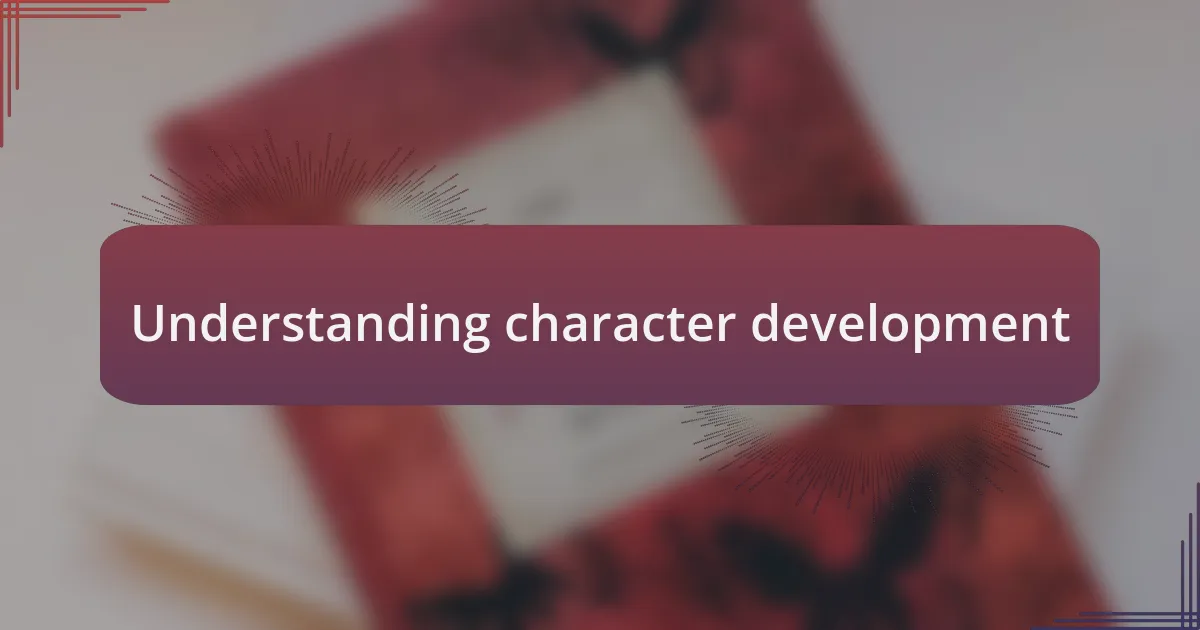
Understanding character development
Character development is the backbone of storytelling, transforming flat, lifeless characters into relatable, dynamic individuals. I still remember reading a novel where the protagonist’s growth mirrored my own experiences; it made the journey feel personal. Have you ever found yourself rooting for a character who felt like a reflection of your struggles?
At its core, understanding character development involves recognizing the motivations that drive a character’s actions. For instance, when I was crafting my own characters, I realized that giving them flaws and weaknesses not only made them more realistic but also allowed readers to connect on a deeper emotional level. Isn’t it fascinating how our imperfections can create the most relatable stories?
There’s also the importance of a character’s backstory in shaping who they are. I often think about how revealing a character’s past can make their choices in the present more compelling. When we learn about their struggles, doesn’t it make us empathize with them even more? This depth enriches the narrative, inviting readers to invest emotionally in the outcome.

Importance of character development
Character development is crucial because it breathes life into a story, helping readers form bonds with characters that feel genuine. For instance, I recall a series where the protagonist faced their insecurities head-on, which pushed me to reflect on my own vulnerabilities. Isn’t it remarkable how a character’s journey can inspire us to confront our own challenges?
Moreover, strong character development allows for profound arcs that captivate readers. I once read a book where a seemingly unlikable character slowly transformed, revealing layers that made me reconsider my initial judgments. Didn’t you find that such revelations make for the most memorable reading experiences, when you discover there’s more beneath the surface?
Ultimately, the emotional resonance a well-developed character creates enhances the narrative experience. I’ve experienced moments where a character’s decision struck a chord within me, making me reconsider my own choices. Doesn’t it feel powerful when a fictional character can influence your perspective? This depth is what makes stories not just entertaining, but also transformative.
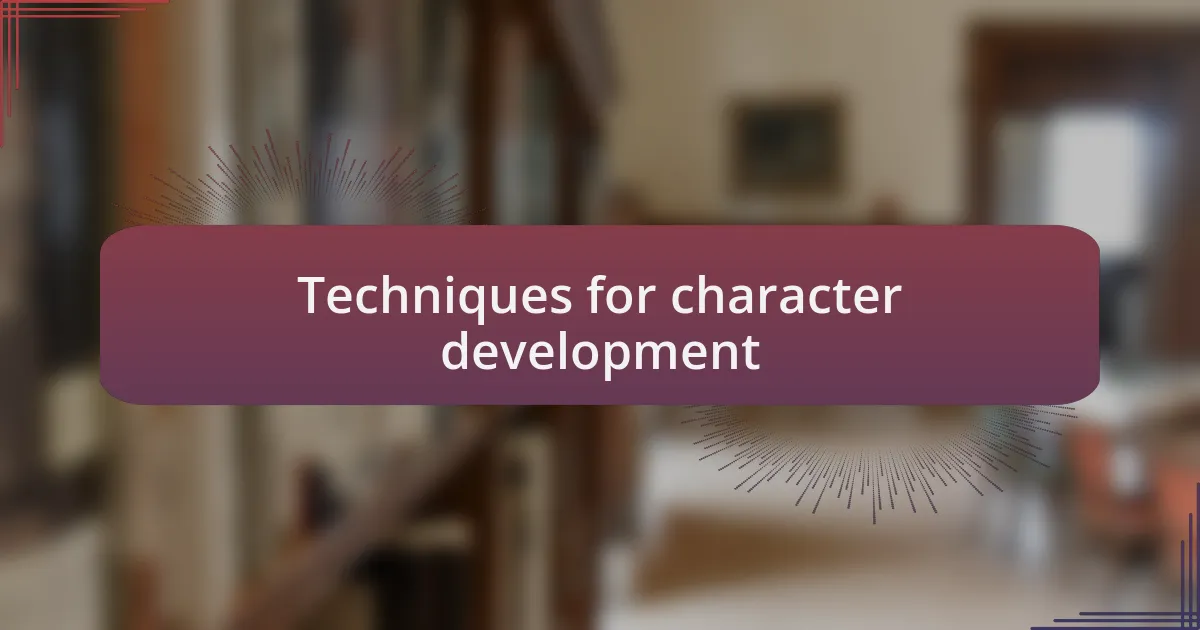
Techniques for character development
When I think of effective techniques for character development, one that stands out is using backstory strategically. I once crafted a character whose past was shrouded in mystery, and as I revealed snippets throughout the story, readers became curious. Doesn’t it create a more compelling experience when you gradually piece together the puzzle of a character’s history?
Another technique that has served me well is the use of dialogue to showcase personality. I remember writing a scene where two characters with opposing views clashed, and their banter not only highlighted their differences but also revealed deeper layers of their motivations. Have you noticed how listening to characters speak can bring them to life in ways that plain descriptions cannot?
Lastly, showing growth through challenges is vital. I wrote a character who faced repeated failures, but with each setback, they learned and adapted. It was fascinating to see how readers empathized with their struggle. Isn’t it inspiring to follow a character who evolves amidst adversity, reflecting our own journeys toward personal growth?
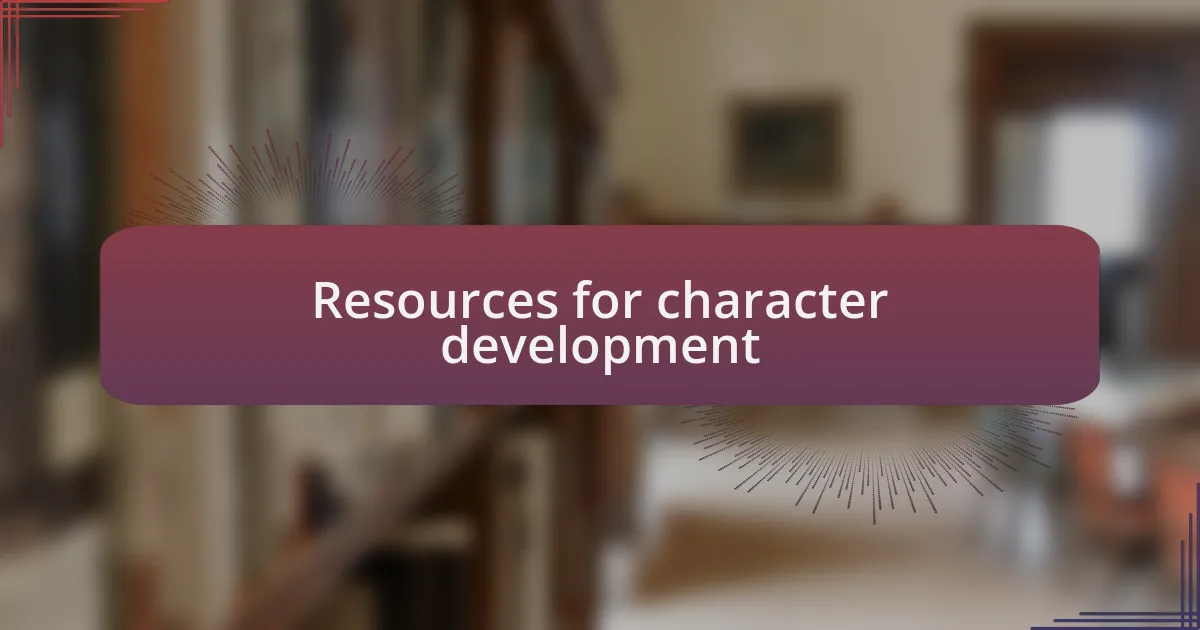
Resources for character development
I’ve found that one of the most valuable resources for character development can be found in character worksheets. They prompt you to think critically about aspects such as your character’s goals, fears, and relationships. The first time I used a worksheet, I discovered layers to my character that I hadn’t initially considered, which made them feel more authentic. Have you ever experienced that “aha” moment when a simple question sparks a deeper understanding of your character?
Another resource I love is literature and character studies. Analyzing well-crafted characters in novels or plays can unravel the intricacies of motivation and conflict. I recall diving into a classic after struggling with my character’s arc. Observing the nuances in another author’s writing illuminated my path. Isn’t it incredible how we can learn so much from those who have walked the same road before us?
Lastly, workshops and writing groups can be a goldmine for feedback and new ideas. Joining a local group opened my eyes to different perspectives and techniques. The collaborative spirit and shared enthusiasm often inspire fresh takes on my characters, pushing me to explore new dimensions. Have you ever found that constructive criticism transformed your understanding of a character or plot point?
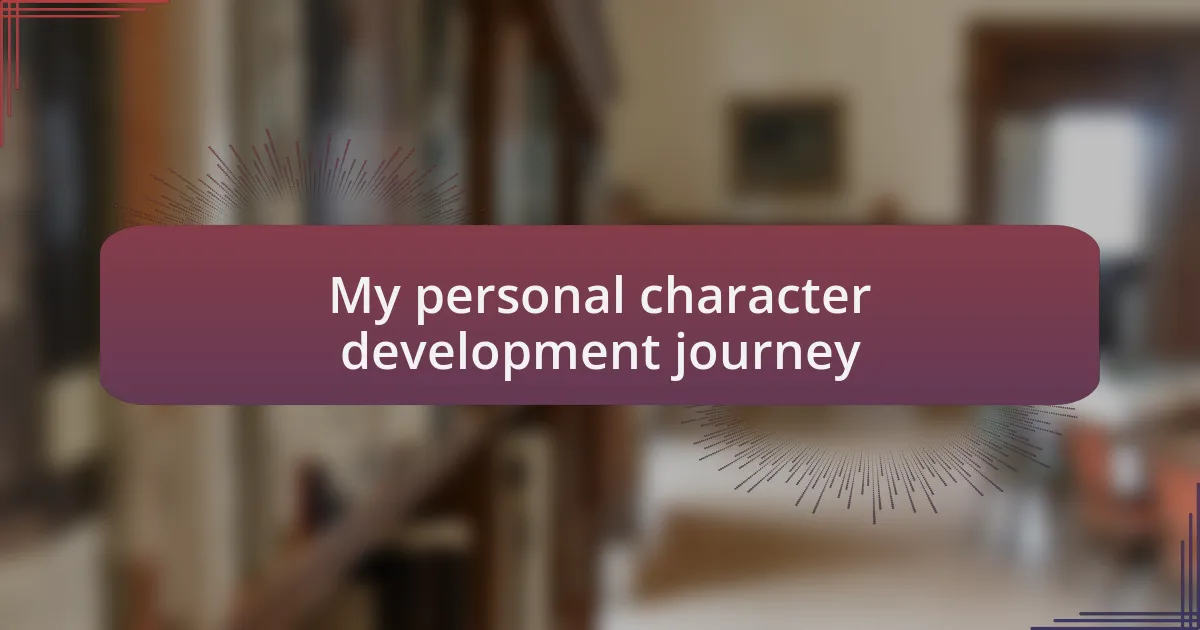
My personal character development journey
My personal character development journey began with a simple yet profound realization: every character has a piece of me in them. When I was drafting my first novel, I struggled with crafting a relatable protagonist. But as I infused aspects of my own fears and dreams into them, the character came alive. Have you ever found that the more personal you make a character, the more readers can connect with them?
Experimenting with different character traits has also been a key part of my evolution as a writer. One particularly memorable moment was when I decided to portray a character with traits I often found difficult to embrace in myself—vulnerability and aggression. The process was challenging, forcing me to confront my own insecurities. I learned that sometimes, reflecting on our own character flaws can lead to the most compelling narratives. Has there been a moment where you found strength in exploring a weakness?
Finally, I’ve learned to embrace the evolving nature of my characters. Early in my writing journey, I often felt like I had to keep my characters static, afraid they would stray from my original vision. However, through discussions with fellow writers, I discovered the beauty of allowing characters to grow and change. There’s something deeply rewarding about watching a character take unexpected turns—that’s where the real magic happens. Have you ever been surprised by your character’s choices, leading you to reevaluate their direction?
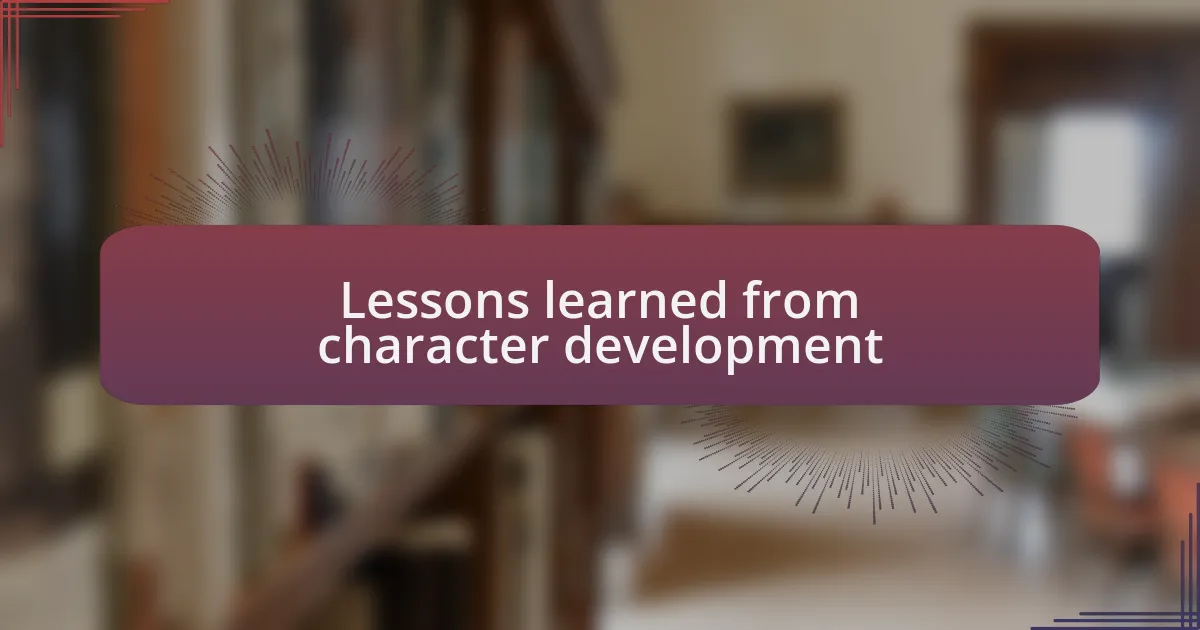
Lessons learned from character development
Diving deeper into character development has taught me that every trait, whether positive or negative, contributes to a fuller portrayal. I remember crafting a character who exuded confidence but carried hidden doubts. It was an eye-opening moment, realizing that even the most seemingly robust individuals have layers of complexity. Have you ever created a character that revealed a new perspective on confidence through their struggles?
I’ve also come to understand the value of vulnerability in character arcs. When I introduced a character who openly addressed their past failures, I was surprised by how much it resonated with readers. This vulnerability not only made the character relatable but also allowed them to inspire others. Isn’t it fascinating how a moment of weakness can often illuminate a path to strength?
Lastly, the lessons of connection and empathy have been profound. As I layered my characters with diverse backgrounds and experiences, I found myself more empathetic as a writer and as a person. I recall receiving feedback from readers who saw themselves in my characters’ journeys, reminding me that we all crave connection. Have you ever realized that the stories we tell can deeply reflect our shared human experience?
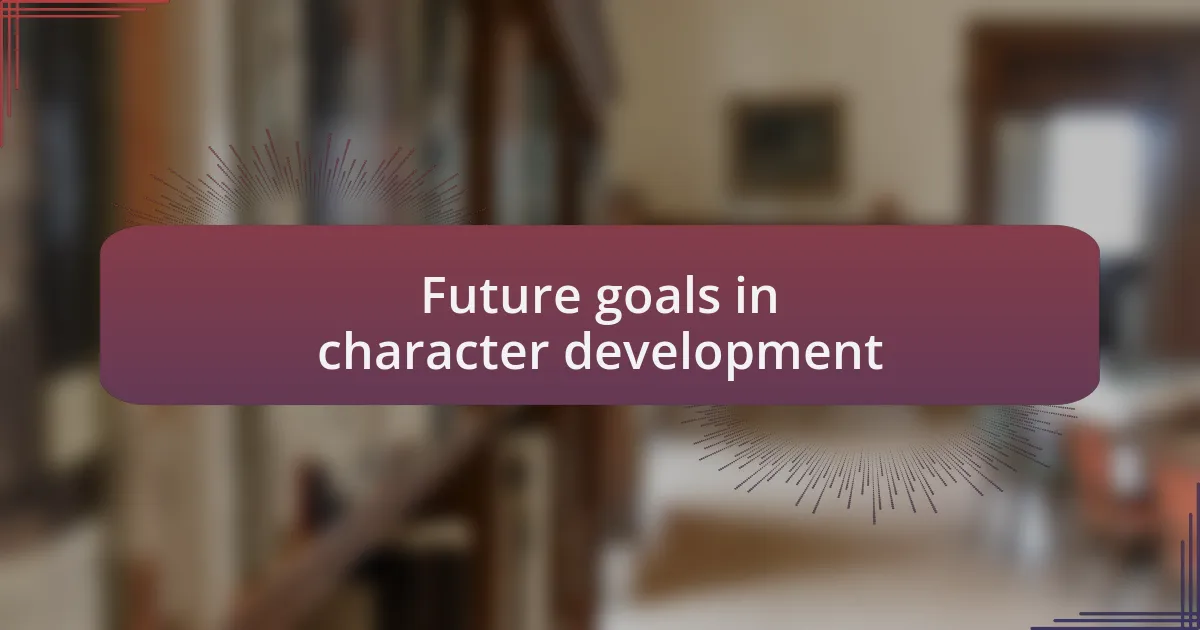
Future goals in character development
As I look toward future goals in character development, I find myself drawn to the idea of exploring dualities within characters. I want to create characters who grapple with opposing desires or beliefs, reflecting the inner turmoil many face in real life. Isn’t it intriguing how a single character can embody both courage and fear? I imagine the depth such a juxtaposition could bring to the narrative.
Another goal is to delve deeper into the impact of external factors on character growth. For instance, when crafting a character who is influenced by societal expectations, I want to explore how these pressures shape their choices and identities. I recall creating a character whose pursuit of acceptance forced her to confront her own values, resulting in a powerful transformation. Have you ever considered how external influences can drive your characters’ journeys in unexpected ways?
Lastly, I aim to experiment with nonlinear character arcs. The idea of weaving a character’s development through time leaps or flashbacks excites me. I want to challenge the conventional linear progression of character growth and invite readers to piece together the puzzle of a character’s past. Could this storytelling method enhance the emotional resonance of their journey? I believe it holds the potential to create a more immersive experience for readers, drawing them into the complexity of the character’s evolution.